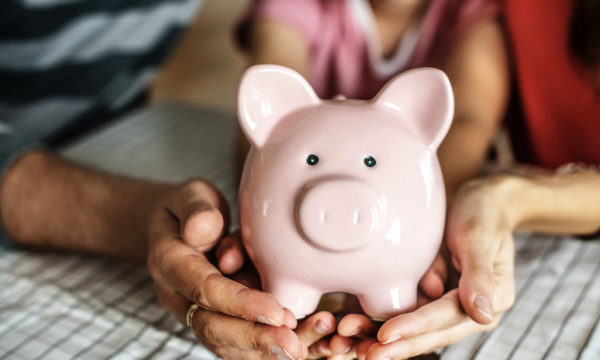Cannabis and post-traumatic stress disorder (ptsd) treatment: Successes and challenges

Post-Traumatic Stress Disorder (PTSD) affects millions of individuals worldwide, stemming from traumatic experiences such as combat, sexual assault, natural disasters, or accidents. The conventional treatments for PTSD often include psychotherapy and medications. However, in recent years, there has been growing interest and research into the potential of cannabis as a treatment option for PTSD. This article explores the successes and challenges surrounding the use of it in treating PTSD, delving into its mechanisms, evidence, legal status, and implications for patients and healthcare professionals.
THC Edibles UK Sweets and Treatment Innovation
In exploring alternative modes of administration, the emergence of THC edibles, including THC edibles UK sweets, adds a layer of complexity and innovation to PTSD treatment discussions. Edibles offer a discreet and potentially longer-lasting method of consumption, allowing patients to manage symptoms without the need for smoking or vaporising. However, the challenges associated with edibles, such as delayed onset and unpredictable potency, underscore the importance of careful consideration and informed decision-making when incorporating them into PTSD treatment plans.
Understanding PTSD and Conventional Treatment
PTSD is a complex psychiatric disorder characterised by intrusive memories, hyperarousal, avoidance behaviors, and negative changes in mood and cognition. Conventional treatments typically involve psychotherapy techniques like cognitive-behavioral therapy (CBT) and exposure therapy, alongside medications such as selective serotonin reuptake inhibitors (SSRIs) and serotonin-norepinephrine reuptake inhibitors (SNRIs). While these treatments have shown efficacy for some individuals, they may not be effective for everyone, leading to a search for alternative therapies.
The role in PTSD Treatment
Cannabis contains numerous cannabinoids, with delta-9-tetrahydrocannabinol (THC) and cannabidiol (CBD) being the most studied. These cannabinoids interact with the endocannabinoid system, which plays a crucial role in regulating stress responses, emotional processing, and memory consolidation—all of which are relevant to PTSD symptoms. THC, known for its psychoactive effects, may help alleviate anxiety and fear responses, while CBD exhibits anxiolytic and neuroprotective properties without inducing intoxication.
Successes in PTSD Treatment
Several studies and anecdotal reports suggest that it particularly strains high in CBD and low in THC, may offer relief for individuals with PTSD. Research published in the Journal of Psychoactive Drugs found that PTSD patients experienced a 75% reduction in symptom severity when using medical cannabis. Moreover, it has been reported to improve sleep quality, reduce nightmares, and enhance overall well-being in PTSD patients, offering hope for those who have not responded to traditional treatments.
Furthermore, cannabinoids have been shown to modulate memory processes associated with traumatic experiences, potentially disrupting the maladaptive fear responses and intrusive memories characteristic of PTSD. CBD, in particular, has garnered attention for its ability to dampen fear-related behaviors and promote emotional regulation, making it a promising adjunctive therapy for PTSD.
Challenges and Considerations
Despite the promising evidence, the use of it for PTSD treatment faces several challenges and considerations. Firstly, the legality and regulatory status vary widely across different jurisdictions, hindering access to treatment for many patients. Additionally, the lack of standardised dosing, limited research on long-term effects, and potential adverse reactions underscore the need for further scientific investigation and clinical trials.
Moreover, while some individuals may benefit from therapy, others may experience adverse effects such as cognitive impairment, dependency, or exacerbation of psychiatric symptoms. The potential for misuse and diversion also raises concerns, necessitating careful monitoring and education for patients and healthcare providers.
Furthermore, the stigma surrounding usage, coupled with its classification as a Schedule I controlled substance in many countries, poses barriers to acceptance and integration within mainstream healthcare systems. Overcoming these barriers will require collaboration between policymakers, researchers, clinicians, and patient advocacy groups to establish evidence-based guidelines and destigmatise it as a therapeutic option for PTSD.
Conclusion
In conclusion, the use of cannabis in treating PTSD represents a complex and evolving area of research and clinical practice. While preliminary evidence suggests its potential benefits in alleviating symptoms and improving quality of life for PTSD patients, significant challenges remain in terms of legality, regulation, safety, and stigma.
Moving forward, it is essential to prioritise rigorous scientific inquiry, patient-centered care, and harm reduction strategies to maximise the therapeutic potential while minimising risks. By fostering open dialogue, supporting multidisciplinary research efforts, and advocating for policy reform, we can work towards a more inclusive and comprehensive approach to PTSD treatment that acknowledges the diverse needs and preferences of individuals affected by this debilitating condition.
Ultimately, the journey towards understanding the role in PTSD treatment requires collaboration, compassion, and a commitment to evidence-based practice, offering hope for a brighter future for those living with the lasting effects of trauma.
The editorial unit

























Facebook
Twitter
Instagram
YouTube
RSS